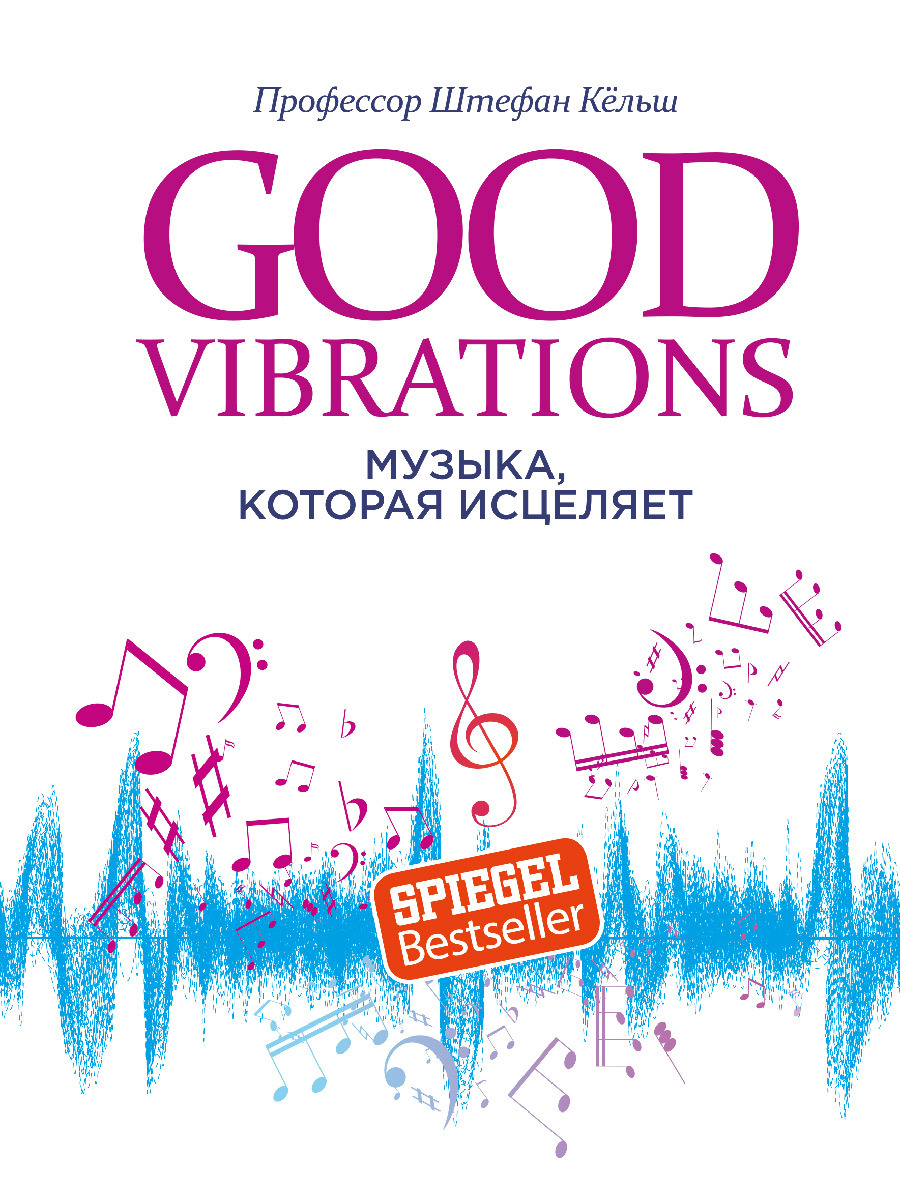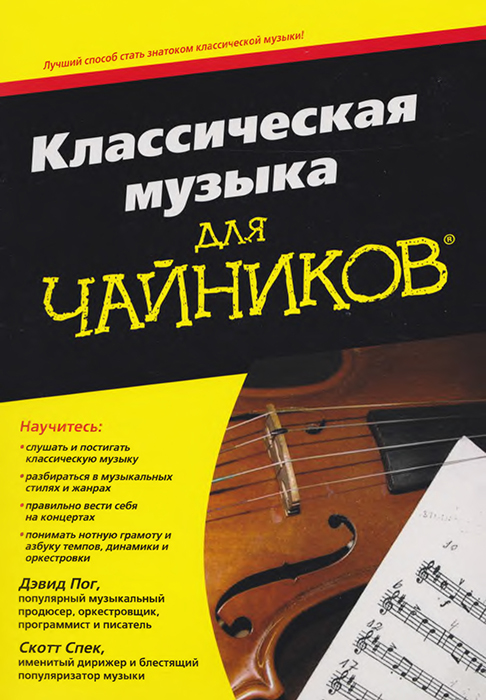Читать книгу - "Good Vibrations. Музыка, которая исцеляет - Штефан Кёльш"
Аннотация к книге "Good Vibrations. Музыка, которая исцеляет - Штефан Кёльш", которую можно читать онлайн бесплатно без регистрации
Эта книга рассказывает о влиянии музыки на физическое и ментальное здоровье человека. Профессор Кёльш утверждает, что музыка лежит в основе человеческой сущности и что музыкальность присуща каждому человеку. Опираясь на новейшие научные исследования, автор рассказывает о влиянии музыки на гормональную, иммунную, вегетативную нервную систему; о том, что происходит в мозге при прослушивании музыки; о влиянии музыки на состояние здоровья и о ее способности лечить болезни и бороться с зависимостями. Вы найдете здесь много практических советов, упражнений и даже списки для прослушивания. Не обязательно читать всю книгу целиком. Вы можете прочесть только нужный вам раздел или знакомиться с частями в любой последовательности. Для всех, кто любит музыку и желает укрепить здоровье.
88
Wiltermuth, S. S., & Heath, C. (2009): Synchrony and cooperation, Psychological Science, 20 (1), 1–5; Launay, J., Dean, R. T., & Bailes, F. (2013): Synchronization can influence trust following virtual interaction, Experimental psychology, 60, S. 53–63.
89
Wiltermuth, S. S. (2012): Synchronous activity boosts compliance with requests to aggress, Journal of Experimental Social Psychology, 48 (1), S. 453–456.
90
Rilling, J. K., Gutman, D. A., Zeh, T. R., Pagnoni, G., Berns, G. S., & Kilts, C. D. (2002): A neural basis for social cooperation, Neuron, 35 (2), S. 395–405.
91
Nowak, M. A. (2006): Five rules for the evolution of cooperation, Science, 314 (5805), S. 1560–1563.
92
Koelsch, S., & Jäncke, L. (2015): Music and the heart, European Heart Journal, 36 (44), 3043–3049.
93
Krabs, R. U., Enk, R., Teich, N., & Koelsch, S. (2015): Autonomic effects of music in health and Crohn’s disease: the impact of isochronicity, emotional valence, and tempo, PLoS One, 10 (5), e0126224; Orini, M., Bailón, R., Enk, R., Koelsch, S., Mainardi, L., & Laguna, P. (2010): A method for continuously assessing the autonomic response to music-induced emotions through HRV analysis, Medical & Biological Engineering & Computing, 48 (5), S. 423–433.
94
Koelsch, S., & Stegemann, T. (2012): The brain and positive biological effects in healthy and clinical populations, in: MacDonald, R., Kreutz, G., & Mitchell, L. (Hg.): Music, Health, and Wellbeing, Oxford University Press, S. 436–456).
95
Koelsch, S., & Skouras, S. (2014): Functional centrality of amygdala, striatum and hypothalamus in a ›smallworld‹ network underlying joy: An fMRI study with music, Human Brain Mapping, 35 (7), S. 3485–3498.
96
Koelsch, S., & Stegemann, T. (2012): The brain and positive biological effects in healthy and clinical populations, in: MacDonald, R., Kreutz, G., & Mitchell, L. (Hg.): Music, Health, and Wellbeing, Oxford University Press, S. 436–456).
97
Kreutz, G., Bongard, S., Rohrmann, S., Hodapp, V., & Grebe, D. (2004): Effects of choir singing or listening on secretory immunoglobulin A, cortisol, and emotional state, Journal of Behavioral Medicine, 27 (6), S. 623–635.
98
Koelsch, S., Boehlig, A., Hohenadel, M., Nitsche, I., Bauer, K., & Sack, U. (2016): The impact of acute stress on hormones and cytokines, and how their recovery is affected by music-evoked positive mood, Scientific Reports, 6, S. 23008.
99
Kam-Hansen, S., Jakubowski, M., Kelley, J. M., Kirsch, I., Hoaglin, D. C., Kaptchuk, T. J., & Burstein, R. (2014): Altered placebo and drug labeling changes the outcome of episodic migraine attacks, Science Translational Medicine, 6 (218), 218ra5–218ra5.
100
Price, D. D., Finniss, D. G., & Benedetti, F. (2008): A comprehensive review of the placebo effect: recent advances and current thought, Annual Review of Psychology, 59, S. 565–590.
101
Moseley, J. B., O’Malley, K., Petersen, N. J., Menke, T. J., Brody, B. A., Kuykendall, D. H., ... & Wray, N. P. (2002): A controlled trial of arthroscopic surgery for osteoarthritis of the knee, New England Journal of Medicine, 347 (2), S. 81–88.
102
Wartolowska, K., Judge, A., Hopewell, S., Collins, G. S., Dean, B. J., Rombach, I., ... & Carr, A. J. (2014): Use of placebo controls in the evaluation of surgery: systematic review, Bmj, 348, g3253.
103
Kirsch, I. (2014): Antidepressants and the placebo effect, Zeitschrift für Psychologie, 222 (3), S. 128.
104
Cannon, W. B. (1942): Voodoo death, American Anthropologist, 44 (2), S. 169–181.
105
Leach, J. (2018): Give-up-itis revisited: Neuropathology of extremis, Medical Hypotheses, 120, S. 14–21.
106
Di Blasi, Z., Harkness, E., Ernst, E., Georgiou, A., & Kleijnen, J. (2001): Influence of context effects on health outcomes: a systematic review, The Lancet, 357 (9258), S. 757–762; Stewart, M. A. (1995): Effective physician-patient communication and health outcomes: a review, CMAJ: Canadian Medical Association Journal, 152 (9), S. 1423.
107
Rogenmoser, L., Kernbach, J., Schlaug, G., & Gaser, C. (2018): Keeping brains young with making music, Brain Structure and Function, 223 (1), S. 297–305.
108
Seidler, R. D., Bernard, J. A., Burutolu, T. B., Fling, B. W., Gordon, M. T., Gwin, J. T., ... & Lipps, D. B. (2010): Motor control and aging: links to age-related brain structural, functional, and biochemical effects, Neuroscience & Biobehavioral Reviews, 34 (5), S. 721–733.
109
Kraus, N., & Strait, D. L. (2015): Emergence of biological markers of musicianship with school-based music instruction, Annals of the New York Academy of Sciences, 1337 (1), S. 163–169.
110
Parbery-Clark, A., Strait, D. L., Anderson, S., Hittner, E., & Kraus, N. (2011): Musical experience and the aging auditory system: implications for cognitive abilities and hearing speech in noise, PLoS One, 6 (5), e18082; Zendel, B. R., & Alain, C. (2012): Musicians experience less age-related decline in central auditory processing, Psychology and Aging, 27 (2), S. 410.
111
Khalsa, S. S., Adolphs, R., Cameron, O. G., Critchley, H. D., Davenport, P. W., Feinstein, J. S., ... & Meuret, A. E. (2018): Interoception and mental health: a roadmap, Biological Psychiatry: Cognitive Neuroscience and Neuroimaging, 3 (6), S. 501–503.
112
Rickson, D. J. (2006): Instructional and improvisational models of music therapy with adolescents who have attention deficit hyperactivity disorder (ADHD): A comparison of the effects on motor impulsivity, Journal of Music Therapy, 43 (1), S. 39–62.
113
Sallat, S., & Jentschke, S. (2015): Music perception influences language acquisition: melodic and rhythmic- melodic perception in children with specific language impairment, Behavioural Neurology, 2015; Franklin, M. S., Sledge Moore, K., Yip, C. Y., Jonides, J., Rattray, K., & Moher, J. (2008): The effects of musical training on verbal memory, Psychology of Music, 36 (3), S. 353–365.
114
Schellenberg, E. G. (2006): Long-term positive associations between music lessons and IQ, Journal of Educational Psychology, 98 (2), S. 457; Schellenberg, E.
Прочитали книгу? Предлагаем вам поделится своим впечатлением! Ваш отзыв будет полезен читателям, которые еще только собираются познакомиться с произведением.
Оставить комментарий
-
 Вера Попова27 октябрь 01:40
Любовь у всех своя-разная,но всегда это слово ассоциируется с радостью,нежностью и счастьем!!! Всем добра!Автору СПАСИБО за добрую историю!
Любовь приходит в сентябре - Ника Крылатая
Вера Попова27 октябрь 01:40
Любовь у всех своя-разная,но всегда это слово ассоциируется с радостью,нежностью и счастьем!!! Всем добра!Автору СПАСИБО за добрую историю!
Любовь приходит в сентябре - Ника Крылатая
-
 Вера Попова10 октябрь 15:04
Захватывает,понравилось, позитивно, рекомендую!Спасибо автору за хорошую историю!
Подарочек - Салма Кальк
Вера Попова10 октябрь 15:04
Захватывает,понравилось, позитивно, рекомендую!Спасибо автору за хорошую историю!
Подарочек - Салма Кальк
-
 Лиза04 октябрь 09:48
Роман просто супер давайте продолжение пожалуйста прочитаю обязательно Плакала я только когда Полина искала собаку Димы барса ♥️ Пожалуйста умаляю давайте еще !))
По осколкам твоего сердца - Анна Джейн
Лиза04 октябрь 09:48
Роман просто супер давайте продолжение пожалуйста прочитаю обязательно Плакала я только когда Полина искала собаку Димы барса ♥️ Пожалуйста умаляю давайте еще !))
По осколкам твоего сердца - Анна Джейн
-
 yokoo18 сентябрь 09:09
это прекрасный дарк роман!^^ очень нравится
#НенавистьЛюбовь. Книга вторая - Анна Джейн
yokoo18 сентябрь 09:09
это прекрасный дарк роман!^^ очень нравится
#НенавистьЛюбовь. Книга вторая - Анна Джейн





